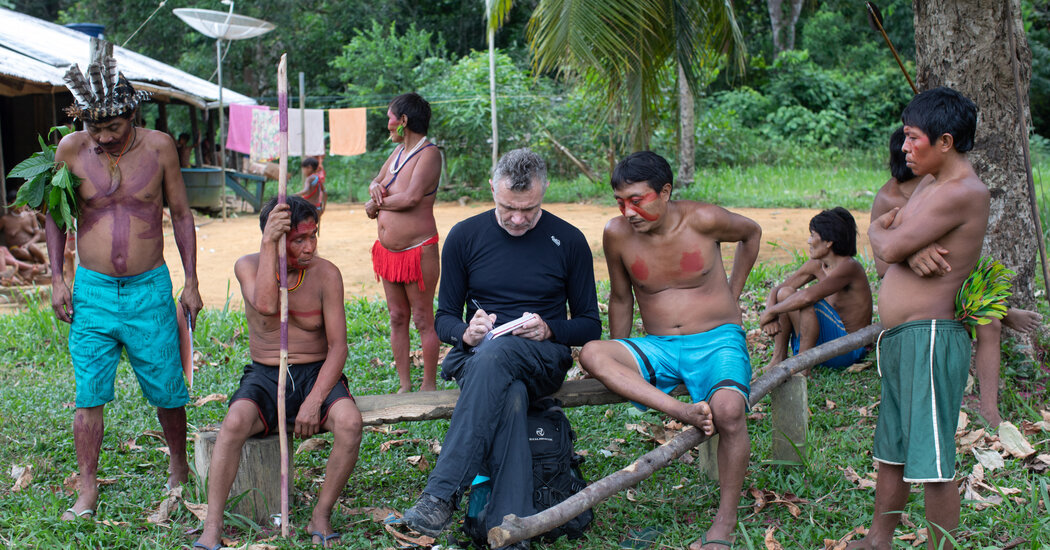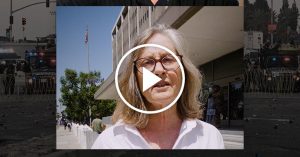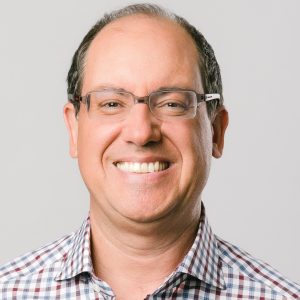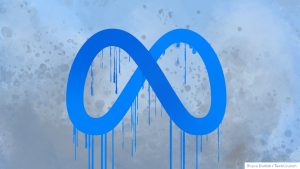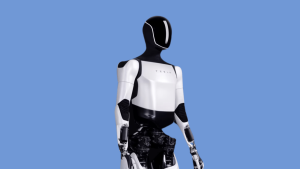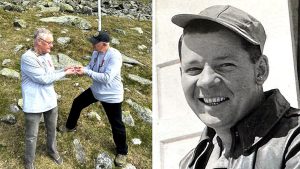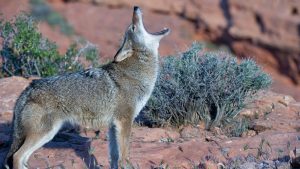In 2018, the British journalist Dom Phillips joined a 17-day expedition into the Javari Valley, a vast, nearly inaccessible Indigenous land on the western edge of the Brazilian Amazon, tracking signs of an isolated group increasingly threatened by illegal activity.
It was a grueling journey: 650 miles by boat and foot, crossing treacherous log bridges, dodging snakes and pushing through suffocating forest. The river, when it reappeared, offered both relief and what Phillips later called moments of “exquisite loveliness.”
He was struck by the Indigenous guides’ command of the “forest’s secrets,” but even more so by Bruno Pereira, the expedition leader and a seasoned official at Funai, Brazil’s Indigenous protection agency.
Phillips saw him as a public servant deeply committed to protecting Indigenous peoples (though he was not himself Indigenous), and able to navigate the Javari with unmatched ease. When he returned to the region to work on a book, he set out to document how an Indigenous patrol was protecting the largely ungoverned territory — an effort then led by Pereira.
The two men ran afoul of an illegal fishing gang and were killed in June 2022. But the story did not die with them.
Journalist friends and family have brought Dom Phillips’s work to life with the release of “How to Save the Amazon: A Journalist’s Fatal Quest for Answers.” Over three years, they completed the half-finished manuscript thanks to crowdfunding, grants and, finally, a willing publisher.
The Javari expedition first appeared in a 2018 article Phillips wrote for the British newspaper The Guardian, and again in the opening pages of his incomplete book.
The trip had been “a huge moment in Dom’s life,” said Jonathan Watts, who co-authored the foreword and a chapter of the book, calling it “a natural starting point, and also maybe fate.”
In 2022, Watts was among the first to hear that the two men had vanished after venturing across the Itaquaí River, deep within the unspoiled rainforest. But there was a crucial mistake: He believed it was Tom Phillips — another Guardian journalist — who had disappeared.
Watts called the paper, which corrected the confusion, while Tom Phillips quickly published the first in a long series of reports on the case — not before calling his family to reassure them he was safe.
He then joined the searches, tracing the region’s remote rivers, the only way in, as hope faded with each passing day. There, he met the photographer João Laet, Dom Phillips’s longtime collaborator and the eyes behind some of the widely shared images of him.
Laet described covering the searches as deeply traumatic. Everything felt chaotic — slow internet, colleagues falling ill with Covid, the relentless pace of reporting, all while one question haunted him: “Where is my friend?”
He held back tears until the workday ended, then collapsed into sleep, each day blurring into the next with exhaustion and grief. “It felt like a trance,” he said in a recent interview.
The two bodies were found on June 5, 10 days after the murder. One suspect confessed to ambushing and shooting the men during a boat journey and led police to the site where they had been hidden.
They were laid to rest in different Brazilian cities that month. Phillips was 57, Pereira, 41.
The crime drew rare global attention to violence in the Amazon. The police concluded that the murders were retaliation for Pereira’s efforts to protect the region from illegal fishing and mining. In November 2024, they charged the alleged mastermind, who was accused of arming and financing the killers.
For Tom Phillips, seeing a colleague’s press card and notebooks recovered in the jungle made it all painfully real: “It could have been any of us.”
But with the news came a “deep sense of responsibility,” he said. “In some ways, it’s therapeutic,” he added, “to keep doing the work, to have a clear mission — which is to finish this book, and keep reporting the hell out of the Amazon.”
The team behind the manuscript moved quickly to secure Dom Phillips’s files, sharing both the digital backups and his carefully cataloged notebooks among the contributors.
For his chapter, Tom Phillips retraced one of his colleague’s journeys to Yanomami Indigenous land — a region of the Amazon as vast, remote and perilous as the Javari Valley.
“Deciphering hieroglyphics” of the late reporter’s handwriting was one challenge. But only by retracing his steps, speaking with the people he met and cross-checking their accounts did the story slowly take shape. “It was all there, if you knew how to break the code,” Tom Phillips said.
Dom Phillips and Tom Phillips are co-authors on a chapter about the rush for Amazon riches, while also showcasing a cacao project supporting local communities in building sustainable income.
Most chapters follow this similar path — rooted in conflict, but searching for solutions.
When Dom Phillips returned to the Javari Valley in 2022 for his book research, the region had become a hot spot for pressured drug trafficking, land grabs, poaching, unchecked cattle ranching and logging.
His widow, Alessandra Sampaio, said he often spoke of a book not just to explore ways forward but to spark an emotional connection to the rainforest, which he felt intensely.
Before the crime, Sampaio said she knew the Amazon “through Dom’s eyes.” He always sent itineraries for safety, along with voice notes, photos and reflections. “Ale, one day you’ll come with me,” he often told her.
She finally got there in 2023, joining a government delegation to the Javari Valley. It was a symbolic return of state presence under President Luiz Inácio Lula da Silva, though Indigenous leaders there continue to call for structural action against growing illegal activity.
One moment stayed with Sampaio: An Indigenous man embraced her, calling her family — and reminding her that family takes care of each other. That, she said, sealed her commitment.
Like many families scarred by loss, she was drawn into a cause through tragedy. Along with helping bring the book to life, she now leads the Dom Phillips Institute, supporting young Indigenous storytellers.
Her only request to the book team was to keep her husband’s hopeful original title. Only the subtitle was changed, as he had inevitably become a character in the story.
“One thing Dom always told me was, ‘Keep going, Ale’,” she said. “Every time I wonder if I can go on, I hear his voice: ‘Keep going, Ale.’ And I do.”

